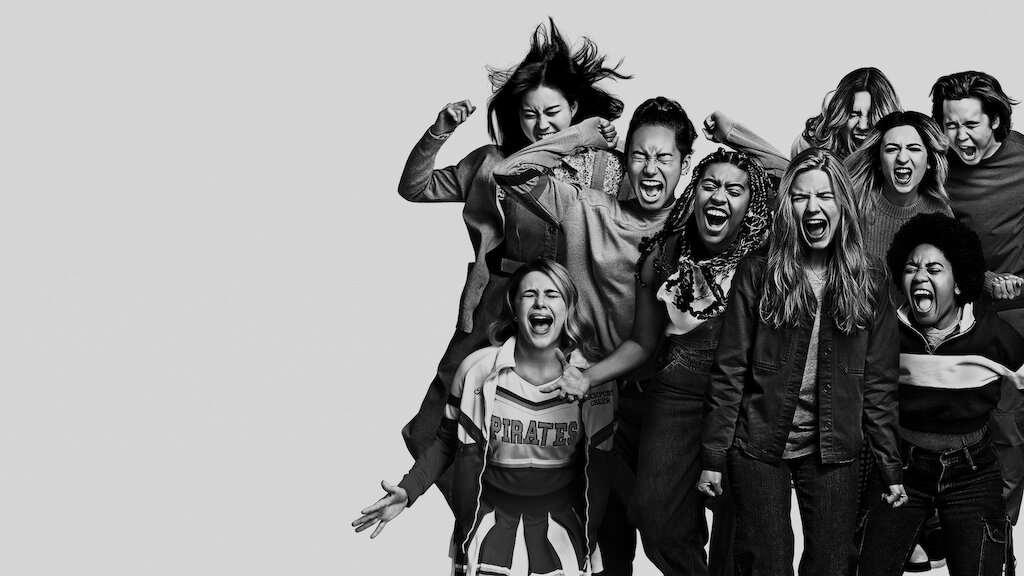Table of Contents Show
Moxie is the most recent Netflix release that supports a female-centered storyline, including Ginny & Georgia, I Care A Lot, Firefly Lane, Pieces Of A Woman, and The Queen’s Gambit. Directed by the iconic and witty Amy Poehler, this film puts women in front of and behind the camera like never before, adding color and nuance to the power in embracing feminist issues that have been shied away from for decades. In 2021, people and revolutions are demanding to be heard, seen, and if necessary, to be the reckoning — Moxie is no different.
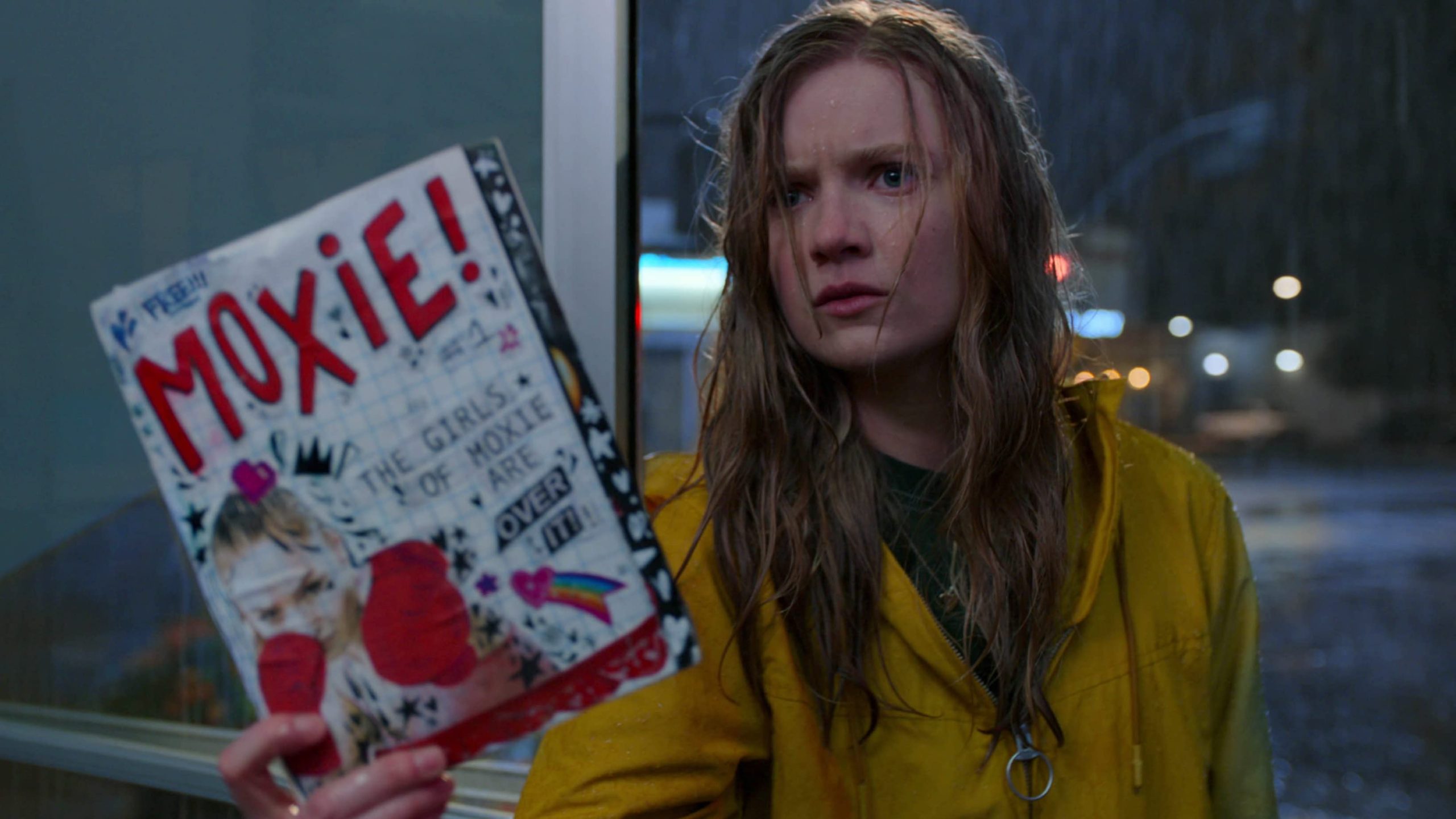
Tired of the flagrant sexism and toxic environment at her school, sixteen-year-old Vivian takes inspiration from her mom’s Riot Grrrl past and creates a feminist zine (by the movie title’s same name) calling out the misogyny at Rockport High and demanding change. A rare two-hour compilation of fundamental feminist ideals, Moxie is a powerhouse for all those who already embody its messaging or want to learn — but the film stumbles with its white feminism and shallow exploration of the movement.
Positive Feminist Representation On Screen
The film covers a wide range of feminist issues, positioning itself as a refreshing and, at times, tearfully empowering work of cinema that shines a light on many of the injustices that cisgender, transgender, and non-binary women have faced since the beginning of history. Moxie is a welcome call to action, tackling topics that include how society protects its male counterparts, rape culture, harassment, male superiority complexes, nuanced sexism, and objectification as well as feminism’s own struggles.
It’s hard to think of another film that has feminism so boldly threaded throughout its entirety, especially when it’s seemingly geared toward a younger, high school demographic. With “feminist” a taboo label not too long ago — when small-town students tried hard not to rock the high school hierarchy — Moxie is evidence of how the youth today are happily picking up the pieces of a broken world to make it better for all. Thankfully, the film is working to inspire the next generation to rally behind feminism that those before may have failed to do. It’s a breath of non-misogynistic Hollywood flair, and Poehler is making waves in terms of breaking the mold and putting such a distinctly feminist storyline on the Netflix streaming powerhouse. Grrrl power!
Principal Shelly: A Powerful, Female Bystander
It’s important that the principal of Rockport High is a passive, female bystander. Principal Shelly’s gender identity is crucial because it shows that even women in power can be toxic to the feminist movement. She dismisses harassment claims as Lucy (Alycia Pascual-Peña) being “emotional” about moving to a new school and forces Kaitlynn (Sabrina Haskett) to go home because her breasts are too distracting in a tank top.
It should be noted that Principal Shelly actually interrupts the class herself by turning on the lights and making a scene about Kaitlynn’s outfit — even though a woman with a smaller chest is not bothered. It seems as though the principal is disrupting the learning environment far more than Kaitlynn is at her desk. Consequently, the students at her school don’t feel safe confiding in her due to fear of not being believed, and that’s a very unfortunate truth in the real world.
Self-Awareness Of Toxic Feminism
Moxie proves its worth again with more nuanced issues of feminism by having a redemptive story arc around Vivian (Hadley Robinson) and Claudia’s (Lauren Tsai) relationship with feminism. As Vivian’s feminist development grows, she becomes increasingly frustrated with Claudia’s lack of explicit support for the Moxie movement, resulting in a brief falling out. This is evident when Claudia is uncomfortable with Lucy’s bold, feminist revolution personality. Claudia’s hesitation becomes more explicit when she is “allergic to Sharpie” (( Poehler, Amy, director. Moxie. Paper Kite Productions, 2021. )) and doesn’t write stars and hearts on her hands in support of the zine’s call to action to do so, encouraging subtle feminist solidarity at Rockport. Claudia also appears to “fail” Vivian when she doesn’t wear a tank top when protesting the school’s sexist dress code and when she remains seated during the nomination of Kiera (Sydney Park) for an athletic scholarship.
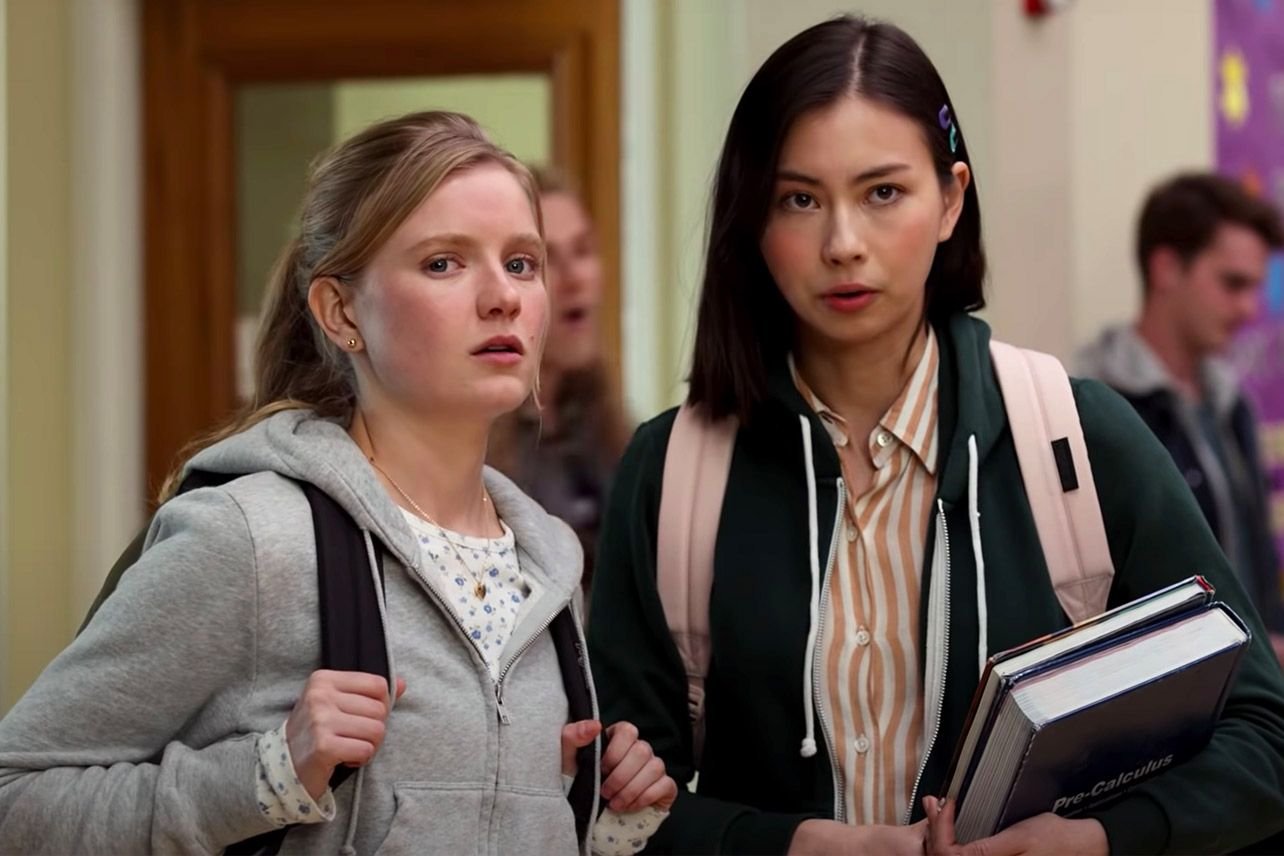
Since Vivian is empowered by bold, Riot Grrrl acts of feminism, she is unable to understand the cultural reasons behind Claudia’s much slower and ultimately different approach toward the same goal. The film does an excellent job of showing how harmful it is for Vivian to be upset with Claudia because she needs to find her own voice in the movement, which she eventually does by signing Moxie as an official club. There is no one way of being a feminist, for people manifest their support for the movement in various ways that all work together to achieve gender equality.
There is also a turning-point scene when Vivian becomes increasingly upset with the patriarchy, lashing out at her mom Lisa (Amy Poehler), Lisa’s boyfriend John (Clark Gregg), and her own boyfriend Seth (Nico Hiraga). Instead of having important and insightful conversations with the men in her life, she immediately casts John and Seth as misogynists. In this same scene, Vivian questions John’s American flag bumper sticker, his side discussion of physics with Seth, and even makes her mom feel bad about wanting to be with a man and for making a meal more elevated than their normal frozen pizza and ice cream. It’s evident that Vivian is dealing with her own internal struggles and Kiera’s loss of the athletic scholarship, and the film alludes that this behavior is parallel to her own downward spiral.
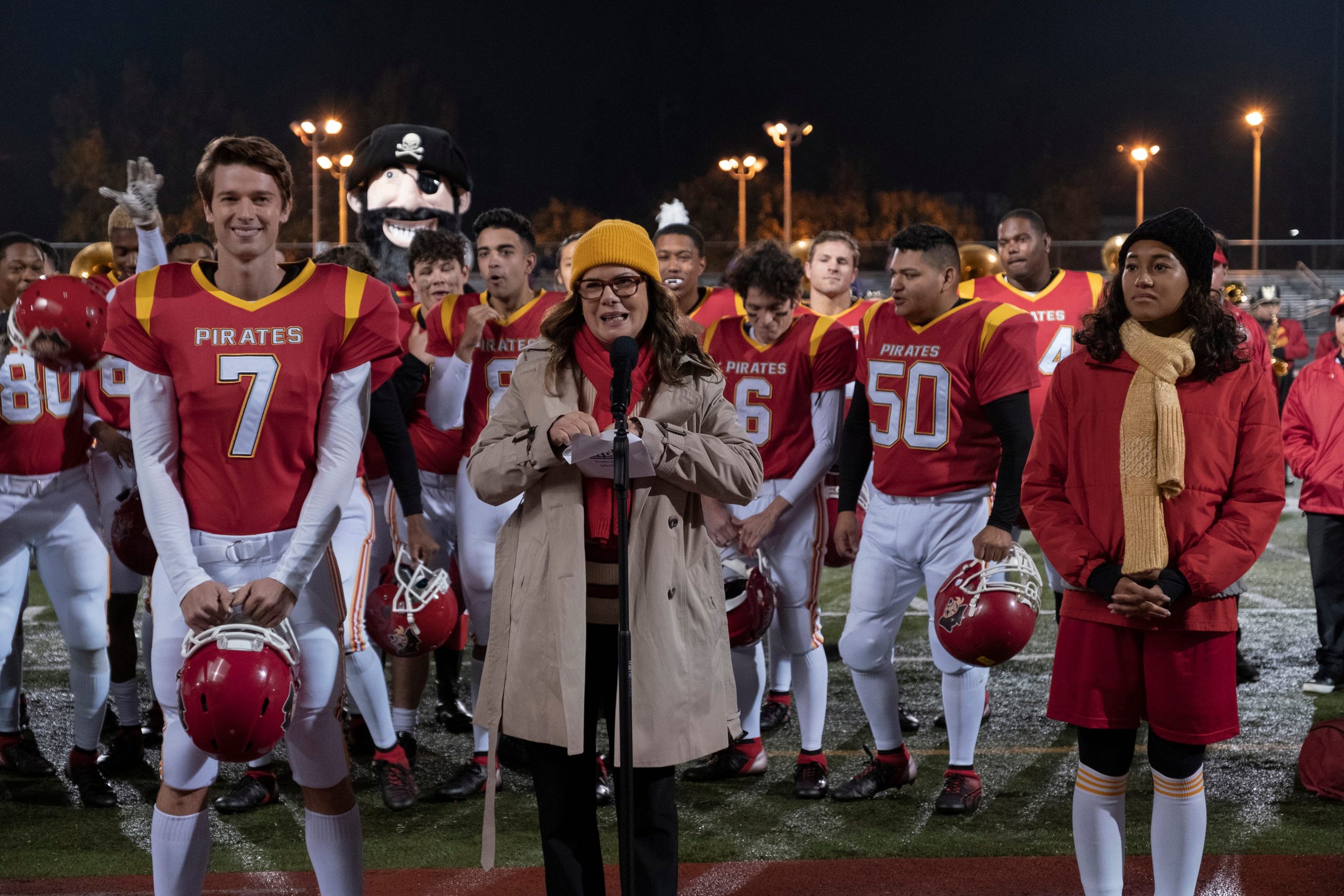
While many of Vivian’s points are critical, feminism fails when assuming that everyone supports the patriarchy unless they’re actively protesting it. Kiera’s scholarship loss was the first big blow to an otherwise easy, steamrolling feminist agenda that Vivian passionately “brought” to Rockport High. She cannot fathom how their seemingly triumphant campaign for the school’s best athlete failed, which forces her to lash out unhealthily at anyone (and any “small” act) that appears to support men and their success at the expense of women more deserving.
Positive Female Relationships
It’s more of a given than not for a female-centered film to pit the female characters against each other, but in Moxie, all of the relationships are positive and real. The female characters easily bond and support each other, eliminating the enemy-to-friend arc to dive deeper into their feminist journey together. This is illustrated in simple ways, like when Vivian tells her mom that she looks extra nice after her date with John — emphasizing that she always looks nice — or when Kiera’s fellow soccer teammate Amaya (Anjelika Washington) says that Kiera’s body is tenfold. These are just little examples of positive, supportive relationships.
There’s also the scene when Lucy and Vivian go shopping for tank tops, and they play a game of “what kind of woman am I” while holding up various pieces of clothing. Instead of negatively stereotyping a woman by her appearance, they provide humorous and complex personalities behind the clothes. This comradery bleeds throughout every scene, when even if there’s tension, there’s still respect. From hyping each other up to being there for one another when it matters, to even endorsing sex-positivity in their group chat, Moxie is a win for female friendships.
Seth: A Feminist Dreamboat
Vivian’s boyfriend is perhaps the best thing to happen to Hollywood romance. Although the film seemingly casts his feminism off to having three older sisters, Seth is downright perfect. From knowing all the names of the American Girl dolls — preferring the tomboy who wants to become a reporter — to wearing tank tops and sporting stars and hearts in support of feminism, he is “nice to everyone” (( Poehler, Amy, director. Moxie. Paper Kite Productions, 2021. )) and is one of the film’s shining stars. Although many of his traits should be a common standard for men, unfortunately, he is a rare example of a heterosexual man fully embodying what it means to be a feminist.
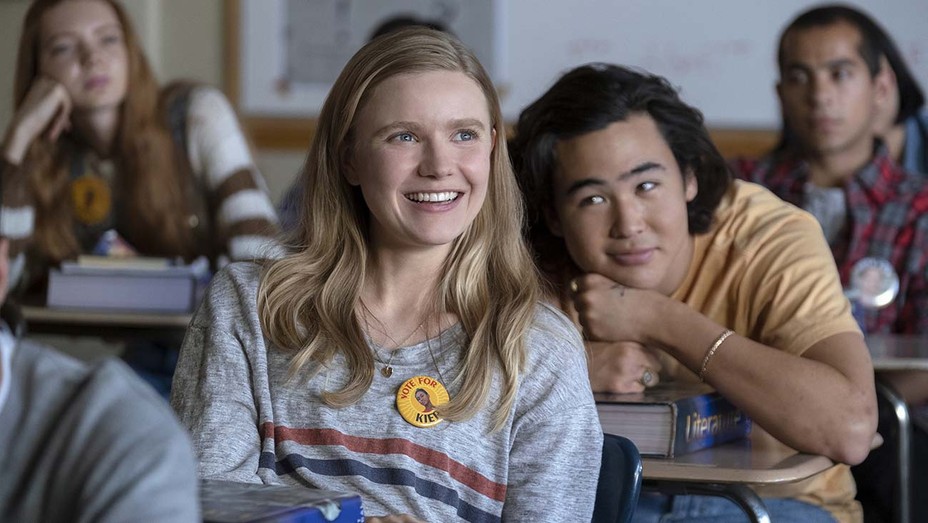
Seth shows up for Vivian and the Moxie movement time and time again, even wanting to leave the feminist zine in the boy’s bathroom. But this is most evident in the way he treats Vivian. On their first date, he suggests taking her home and doesn’t kiss her because he wants to respect her as a “super-powerful feminist” (( Poehler, Amy, director. Moxie. Paper Kite Productions, 2021. )). Their almost-sex scene is also critical because he easily admits to being a virgin and for wanting their first time to be special, something that is regularly cast onto the “pure” female trope in a heterosexual relationship. Seth also lets Vivian be her own person as she hangs out with her friends without him. Plus, he doesn’t throw away her note when he’s upset with her, tells her when she’s toxic and that he deserves better, and writes her name on his arm — a feminist spin on her anger from the family dinner.
Negative Feminist Representation On Screen
Despite its applauded representation for many modern-day feminist issues, Moxie continues to be received with mixed reviews. The film is hailed for much of the above positives, but it is more often critiqued for its narrow lens through Vivian’s eyes and how the film — and the entire school and community — all-too-easily progress within its short time frame. With a 6.7/10 score on IMDb and 69% on Rotten Tomatoes, it’s clear that Poehler’s highly-anticipated feminist rallying cry didn’t quite hit the mark. This is most notably due to the fact that many outlets and viewers agree that the true hero of the story is Lucy, and rightfully so.
Vivian’s progression as a feminist and much of Moxie’s momentum and support are due to Lucy’s leadership and confidence as an empowered female. However, Moxie also includes examples of superficial and toxic feminism without addressing it, even encouraging and supporting it. Furthermore, the film’s “intersectionality” serves more as a side-plot and diversity checklist versus a substantial and complex work for all people within the feminist movement.
Justice For Lucy
It’s true — Lucy should have been the main character of Moxie. Vivian’s story development relies solely on Lucy’s own moxie, feminist ideals, and revolution power. In fact, it quickly becomes clear that Vivian’s entire “awakening” is due to her friend as she steals her energy and strength, recycling it through a white perspective. From proudly debating a book’s modern worth to building the entire Moxie club and campaign, Lucy is the beating heart of feminism and the film that casts her to the side.
The first real taste of the power of feminism is when Lucy calls out her teacher Mr. Davies (Ike Barinholtz), and his summer reading assignment, The Great Gatsby. By questioning the narrative of the American Dream through a rich, white man’s story, Lucy sets the stage as the scene-stealing badass. However, Vivian uses Lucy’s argument to test out an essay response for her college application, beginning the trend of running away with Lucy’s inspiring thoughts. She also teaches Vivian to keep her head held high and that Mitchell isn’t just annoying but dangerous, moments after Vivian stands in silence as he harasses Lucy and spits in her soda. These instances will eventually turn into quotes and points of evolution for Vivian later in the movie.
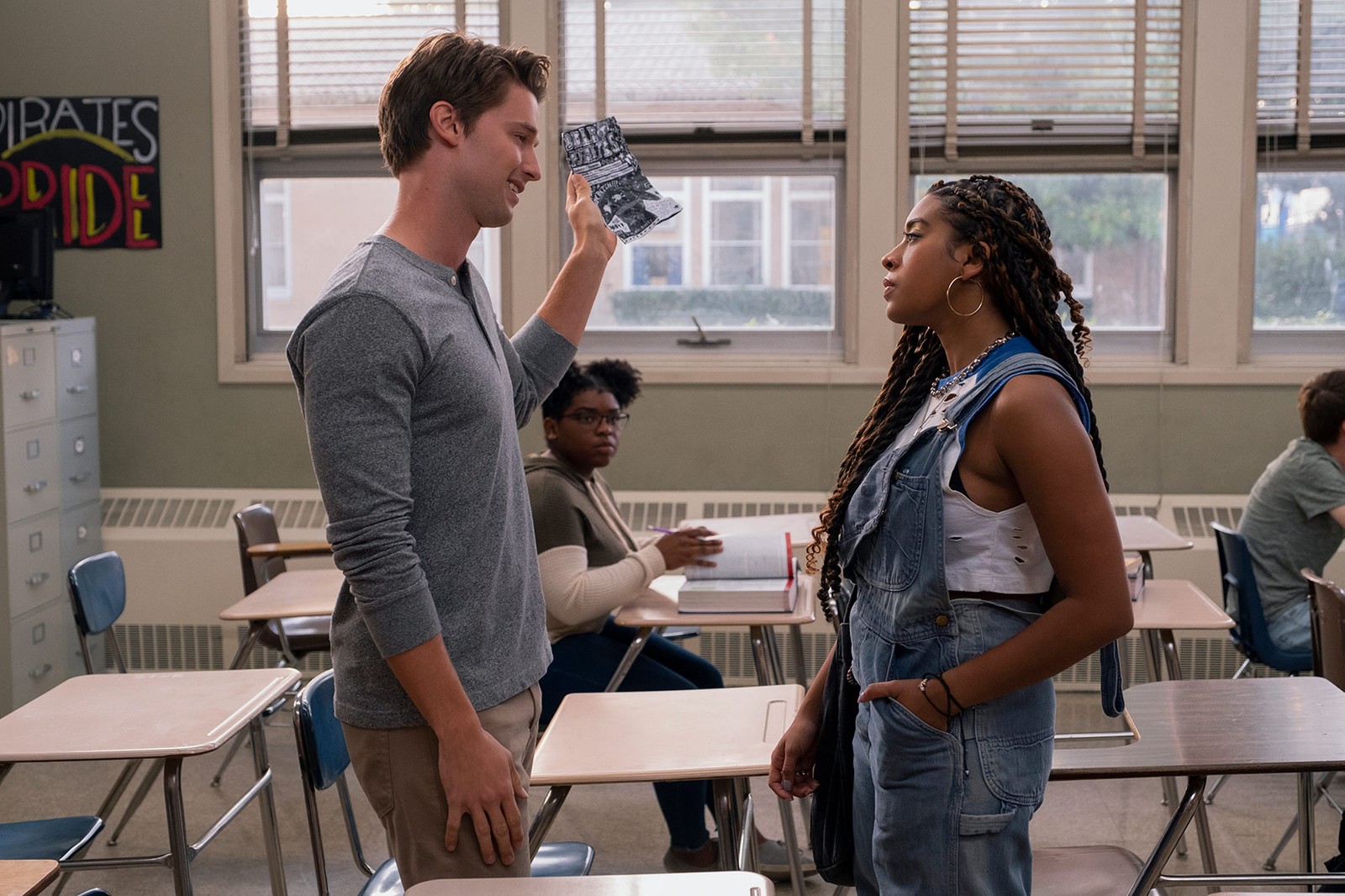
Aside from having the best ideas and a well-rounded embodiment of feminism, Lucy is a born leader. She organizes Moxie’s first unofficial meeting at a party and starts the organization’s Instagram account to give the movement momentum. This, of course, is in addition to being the sole speaker at a celebration before the scholarship announcement, leading the locker room discussion and later campaign, and being the first person to stand up to nominate Kiera. These are all wonderful things on their own and make for a strong part, but the fact is that Lucy is Moxie where it matters and the true hero that brings feminism to Rockport High — not Vivian.
Thus, the intersectionality that Moxie is trying to go for is dismissed on the grounds of telling a Black woman’s story through white feminism. Plus, the anonymity of Moxie ultimately serves as a tool for Vivian’s own personal concerns and anger, which she prefers because it speaks for her. Not only is she misleading her friends and not allowing Moxie to be all that it could be, intersectional and otherwise, but she later complains to her mom that she is all alone in this with no help — completely rejecting Lucy’s massive contributions.
Intersectionality Woes
Lucy’s injustice is just one major example of Moxie’s failed attempts at intersectionality. Although the film touches upon some positive awareness, it still fumbles the ball. Some of the film’s more positive examples include when Lisa recognizes that her own feminism in high school wasn’t intersectional enough, calling their meetings pow-wows. There is also the self-aware scene when Principal Shelly tells Lucy that she could blow her strong emotions into a saxophone (an instrument long associated with Black jazz), the inclusion of Claudia’s Asian immigrant storyline, and the strong Black women of the soccer team.
It’s imperative to have representation on screen, but it has to be more than feeling like something thrown in just to say that you did. This is prevalent with Audrey’s (Josie Totah) storyline, a transgender woman whose teachers refuse to call her by her name. Meg’s (Emily Hopper) inclusion as a physically disabled band student. Far too few products of Hollywood have Black, transgender, and physically disabled characters. Still, with Moxie trying to cover too many feminist issues, it carelessly leaves Audrey and Megg to serve as simple, stereotypical stand-ins for diversity. Megg’s only role is soft, comedic relief as a self-aware woman who’s tired of being put in the back of the band or having to wait for the cheerleaders to move out of the way of the accessibility ramp.

Or worse yet, a role as a pawn in Vivian’s feminist awakening — Vivian passes by Megg and quickly tells her that she likes the stars and hearts on her hands, their only noteworthy interaction. As for Audrey, her character is only included in the film to highlight the ubiquitous and hateful act known as deadnaming. This is briefly touched upon when Audrey tells her Moxie peers that even teachers refuse to call her by her chosen name. Unfortunately, this is quickly smoothed over when the adults — who call her by her deadname at her audition for Little Shop Of Horrors — smile and nod in shocked enjoyment at her impressive singing voice.
It’s also important to note that Audrey and Meg are paired together in the bathroom when the film shows different women talking about the Moxie zine. Although this goes against the harmful narrative that people only socialize within their own demographic, it still has an othering effect when these characters are together by happenstance in a predominantly cisgender, able-bodied school. This lazy storytelling is also similar to the quick, haphazard inclusion of “You can’t touch my hair” (( Poehler, Amy, director. Moxie. Paper Kite Productions, 2021. )) sentiments at the end of the school’s walk-out. Apparently, at Netflix, it counts as being “woke” and inclusive if you let a Black woman speak for a few seconds at the end of the film about one of the many injustices she faces — an injustice that is tangible and explicit for a passive white person, at that.
Shallow, Dangerous Feminism
Moxie deserves credit for the subtle nods and awareness of many toxic feminist tropes, but it still lets several instances of negative feminism slip through the cracks. From the smallest moments, such as when Lucy unbuttons the jacket of a clothing store mannequin in the act of liberating her sexuality — implying that modesty equals oppression – to using Emma’s rape (Josephine Langford) as a redemption arc for Vivian, Moxie juggles so many topics that it nearly topples the entire film. Additionally, two important toxic instances involve Principal Shelly’s wisdom and Moxie’s failure under the guise of feminism. The first is when Shelly says into the microphone, “There was a ballot box in the multi-purpose room” (( Poehler, Amy, director. Moxie. Paper Kite Productions, 2021. )) when the women nominate Kiera for the athletic scholarship during halftime.
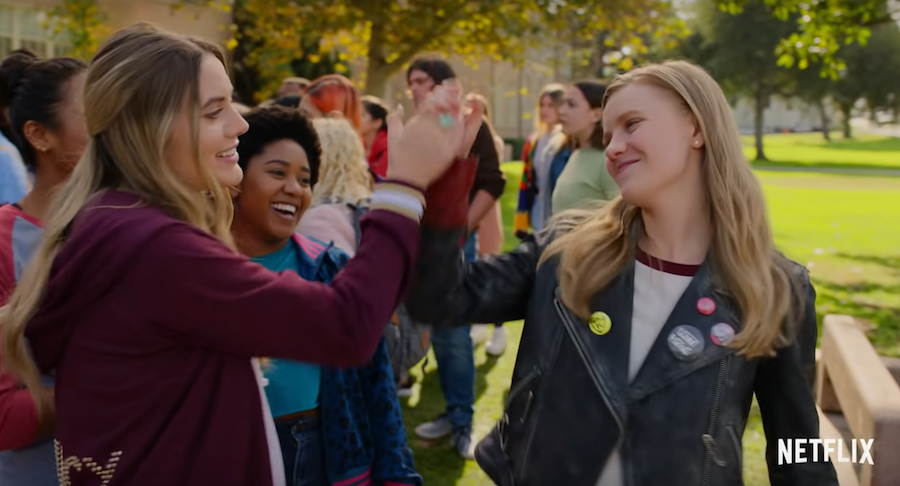
Why aren’t the women utilizing the systems in place to topple the patriarchy? Their spontaneity at the football game suggests that only radical acts will accomplish their goals, ignoring avenues set in place and implying that no other person at that school thought to nominate the best athlete until Moxie came along. Again, it’s dangerous to assume feminism only looks one way. The other similar instance is when Principal Shelly tells Vivian, after Kiera’s loss, that Kiera could have spoken on the morning report if Moxie had only asked. She says, “If you want a seat at the table, pull up a chair.” (( Poehler, Amy, director. Moxie. Paper Kite Productions, 2021. )) Granted, Mitchell’s overconfidence and assumption of a place at the table gave him the opportunity to play the victim before voting began. But Shelly’s right — Moxie needs to make room for itself where decisions are made instead of being upset with the messenger.
Finally, a very explicit form of toxic feminism is when Amaya proudly confesses during the walk-out that she was the one who tripped the pirate mascot — resulting in a broken arm — because “That’s for feminism right there.” (( Poehler, Amy, director. Moxie. Paper Kite Productions, 2021. )) The young man who inhabits the mascot is harmless throughout the entire film, although seemingly ignorant. He isn’t a feminist hero by any means, but he does walk out in support of Emma’s survival and is a source of goofball spirit throughout Moxie. Perhaps most dangerous of all, Amaya’s gleeful tripping gives strength to the nonsense idea that feminists have a hateful vendetta against all men, no matter what.
In Moxie‘s Feminism, Feminists Do Not Prevail
It’s empowering to see feminism at the forefront in Moxie — a trailblazer of its kind — but with every stride, it makes for the feminist movement, it takes two steps back. Feminism won’t stand without proper intersectionality where people of color, non-binary genders, and varying physical abilities are more than just a minor side character with a few lines. This film’s celebration of feminism undermines itself with its bubbling toxicity and selective self-awareness, leaving feminists frustrated with the fuel it provides for the patriarchy. Movies are only two hours long and are absolutely impossible to be everything for everyone, but with Moxie taking on more than it can chew, it leaves the viewer with nearly nothing to root for.
